May 10, 2024
Village home to Jesus in Japan claim readies for annual Christ fest
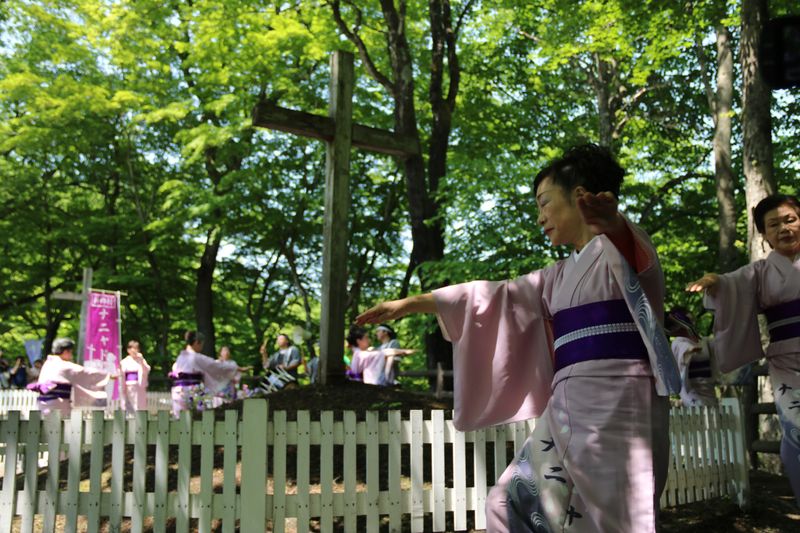
The village of Shingo in Aomori Prefecture, northern Japan, will hold its 60th Christ Festival in June at the site of a tomb claimed by some to be the final resting place of Jesus Christ.
Let’s fill in the blanks. The so-called “unknown years” of the life of Jesus of Nazareth, somewhere between years 12 and 29, which are not described in the New Testament of the Bible.
It turns out that for some of those years, from the age of 21 to 33, Jesus was here in Japan, in pursuit of knowledge of the divine before he returned to what was to become the holy land on the back of his preaching.
And this according to written testament from Jesus Christ himself, in turn according to an information sign placed at the site of Christ’s final resting place. Not the one in the Church of the Holy Sepulchre in Jerusalem, but an unassuming tomb in the village of Shingo in Aomori Prefecture, northern Japan, where as this particular legend would have it he was laid to rest next to the tomb of his brother, Isukiri.
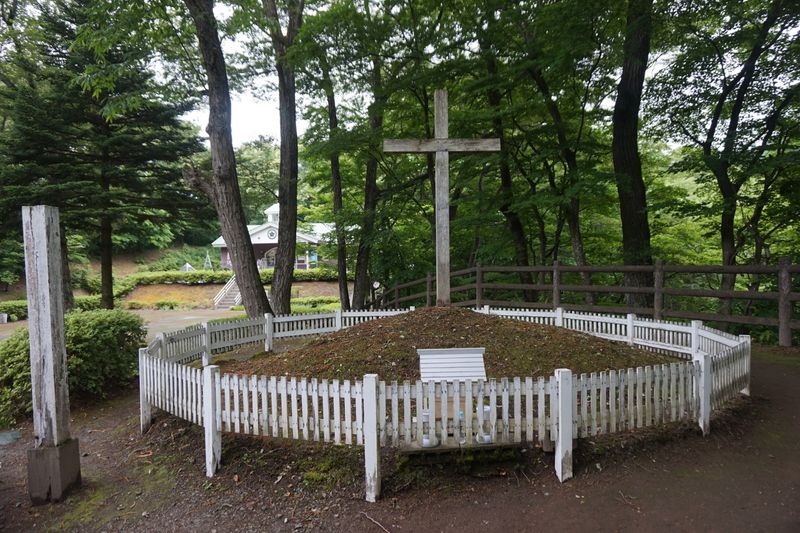
(Here lies one of the ears of Christ’s brother Isukiri, Shingo Village, Aomori Pref. Supplied image.)
It all sounds like a tall tale requiring a leap of faith gigantic enough to match the scale of the journey from Judea to Japan Christ would have had to have undertaken around 2000 years ago, for the second time. And this time after having been nailed to a cross.
But the story of how Christ came to be laid to rest in the deeper reaches of northern Japan requires its audience to provide yet further rope.
It wasn’t Christ who was crucified at Calvary, it was his brother, Isukiri. Isukiri, it seems, sacrificed his own life so that Christ could escape to Japan taking with him one of his brother’s ears and a lock of his mother’s hair - now the contents of Isukiri’s tomb. Christ would live out the rest of his life in Japan eventually passing away at the age of 106.
On June 2 the village of Shingo will welcome believers, skeptics and the curious to the 60th edition of its Christ Festival, held to appease the spirit of Jesus and organized by the local tourism bureau since 1964.
During the annual festival participants perform a kind of summer bon dance known as the Nanya Doyara, named after its accompanying song which is composed of lyrics in an unknown language. Some have posited that the language of the lyrics is in fact Hebrew. (There are other theories behind the meaning of the lyrics, one of which is delightfully blunt, that it served as a kind of vocal exercise or voice test for the Bon dance itself.)
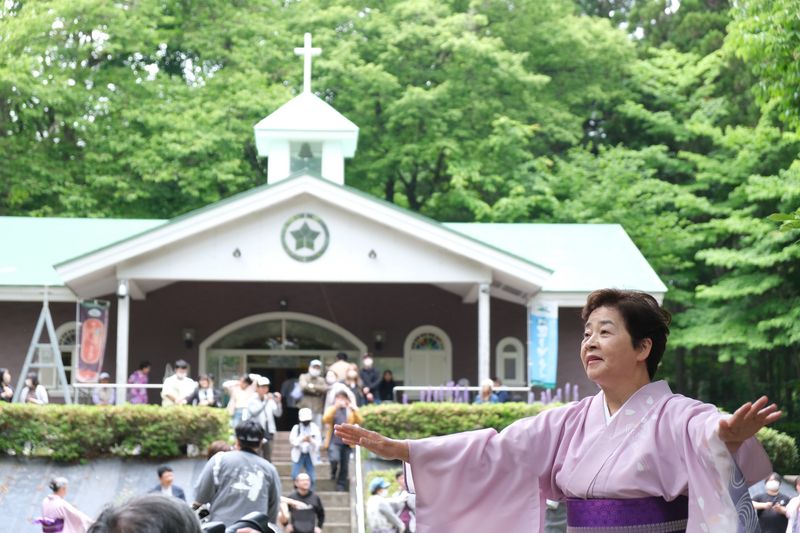
(Scenes from the annual Christ Festival in Shingo Village, Aomori Pref. Supplied image.)
It would be easy for the skeptic or down-right cynical, like me, upon hearing of Shingo’s Jesus in Japan story and of Christ fest 2024, during which people perform a dance around the tomb of Christ chanting lyrics in a mysterious language, to want to give the people involved and the area itself a wide berth.
Actually though, I suspect this attitude itself to be some way wide of the mark. The Japanese often take an à la carte approach to religion - many are born Shinto and die Buddhist, so the saying goes, and more recently a kind of fancy-dress Christian wedding somewhere in between has become the norm. Incidentally, people attending the upcoming festival in Shingo will also be able to order a serving of “Christ ramen.”
Here in Japan then, a leap of faith isn’t always required and isn’t really the point anyway. Faith is found in the ceremony, in the upkeep of tradition, and in the sense of community that comes with putting on and attending an event, including one like the Christ Festival in Shingo.
So then I don’t feel any significant urge to devote much in the way of time and energy to the source of Shingo’s Jesus in Japan yarn - the so-called Takeuchi documents.
The Takeuchi documents refers to an apocryphal collection of manuscripts and treasures which are said by believers to record the history of the universe from its creation. The documents were guarded and passed down by the Takeuchi family who headed a shrine in Ibaraki Prefecture, near Tokyo.
Among the revelations and explainers said to be contained within is testimony from, or inspired by, Jesus Christ himself. Upon their discovery or outing in the early 1930s, the documents led people to Christ’s tomb in the village of Shingo. Unfortunately, or rather conveniently, the Takeuchi documents are said to have since been all but destroyed by World War II air raids.
According to the late Wado Kosaka, an author, archeologist and apparent authority on the Takeuchi documents, among the “extraordinary” facts recorded are those that describe the world government as being located in Japan.
“The great holy masters of the world, Moses, Jesus, Mohammed, Shakyamuni Buddha, Confucius and Lao-Tsu were born from the five-colored races which branched off from the Japanese race and all went to Japan for study and training,” Kosaka wrote in the preface of his book The Takeuchi Documents Book 1.
Fantastical, throwaway, but also just a little bit fun as far as I am concerned.
Wait, there’s more!
As if the discovery in Shingo of the final resting place of Jesus Christ wasn’t enough, more mysteries and legends can be found in the area.
In 1933, a mountain or hill in Shingo, dotted with huge rocks and stones was identified as a pyramid - the Oishigami Pyramid - and a sacred site where rain-making ceremonies were held during periods of drought.
Another theory about the site comes back to the Takeuchi documents which are said to describe seven pyramids in Japan, pyramids older than those in Egypt. One of those pyramids was discovered in Shingo.
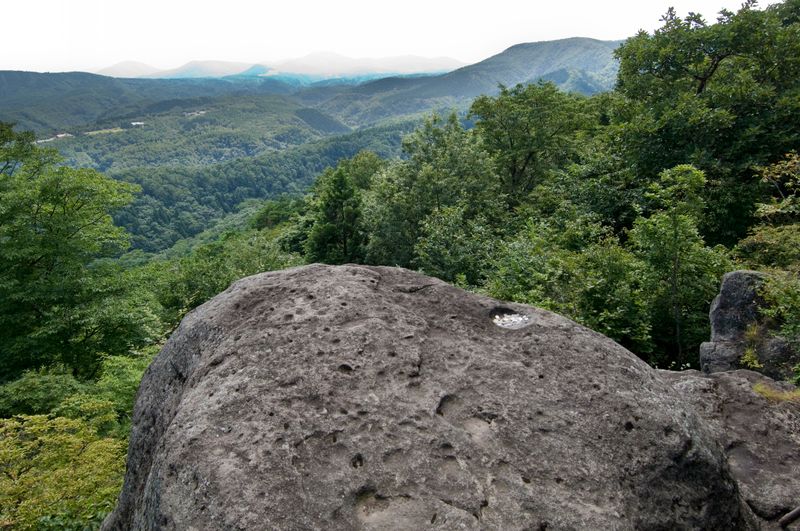
(View from the Oishigami Pyramid in the village of Shingo, Aomori Pref. Supplied image.)
The village of Shingo is located in southeastern Aomori Prefecture with the beautiful Towada Lake a few kilometers to the west and the city of Hachinohe to its east.
Witness the festival and unveil Shingo’s mysteries for yourself!
A 3-day / 2-night tour of the area will depart from Misawa Airport (also picking up at Hachinohe Station), Aomori Prefecture, on June 1. Participants will be able to see the Christ Festival and experience the Nanya Doyara dance. The tour will also take in the Oishigami Pyramid, Kabushima Shrine in Hachinohe, and the beautiful Lake Towada.
For tour inquiries and bookings feel free to contact one of the following representatives at Nippon Travel Agency:
Email: yutaro_akama@nta.co.jp
Email: kanji_omotani@nta.co.jp
Further details about the tour can be found at the page below (however bookings should be made by email using one of the contacts above).
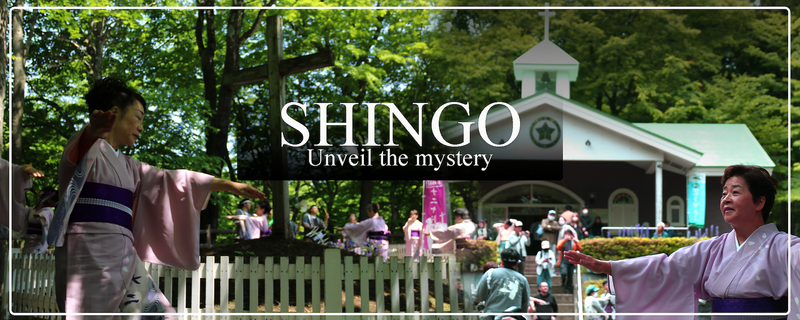



0 Comments